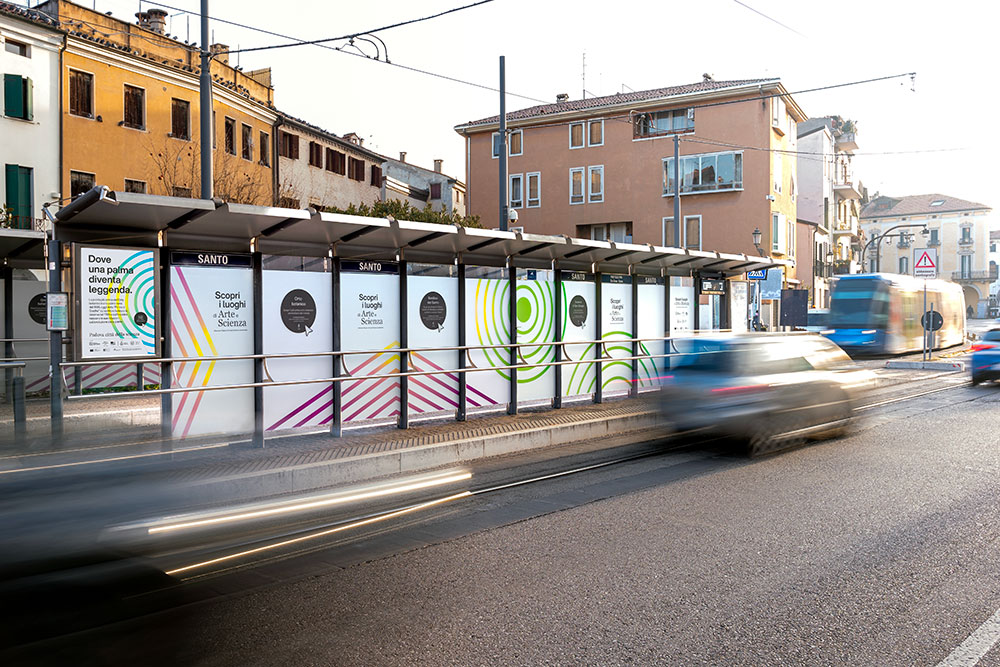
Along the tram line, discovering Padua, the city of art and science
21.01.2025
From north to south, through the center of Padua, the tram tracks draw a line that connects some of the city's main cultural sites: the Scrovegni Chapel, the Museum of Nature and Humankind, the Palazzo della Ragione and Palazzo del Bo, the Basilica of Saint Anthony, and the Botanical Garden of the University of Padua.
Here is the new project Padua: City of Art and Science, born from the collaboration between the University and the Municipality of Padua - and thus between the two UNESCO sites of the University Botanical Garden and the 14th-century fresco cycles. It establishes, at the points identified by the metrobus stops, the stages of an extraordinary route that leads citizens and visitors to discover the artistic heritage and scientific wonders of our city. This new cultural proposal – balancing art and science – thus enhances the fortunate 'geographical' location along a single axis of several highly attractive sites in Padua.
Already these days, we will find customized shelters at the metrobus line 1 stops, corresponding to the stops that lead to the city's world heritage sites - Eremitani, Ponti Romani, Tito Livio, and Santo, while the front and rear spaces of each shelter promote our art and science sites, also indicating directions and travel times to reach them.
The interiors of the vehicles, which currently already host informational and in-depth tags on Padua, City of Art and Science, will soon be "dressed" to communicate even more strongly this extraordinary cultural wealth of the city, which includes two UNESCO sites within its walls: the Botanical Garden and the 14th-century fresco cycles, a unique feature in Italy.
The cultural promotion campaign, which aligns with the sustainable mobility policies of the Municipality and University, is realized thanks to funds from the Ministry of Tourism and PNRR - Ministry of Culture.

"This is a seminal moment for the cultural offerings of the University of Padua, as it presents a coordinated proposal for visiting our sites within a sustainable mobility route, which is the tram. This north-south tram line connects significant treasures of our heritage that are related to both the artistic and scientific dimensions," says Mauro Varotto, delegate for Museums and Collections at the University of Padua. "Just think that in 2024 the university recorded a record number of visitors to its sites."
Indeed, 2024 confirmed the excellent trend in visits to the cultural heritage of the University of Padua: the first year of the Museum of Nature and Man saw 90,336 visitors; the trend of increasing visits to Palazzo Bo and Sala dei Giganti has been consolidated (91,941 visitors, +9.3% compared to 2023). The Botanical Garden, a UNESCO heritage site, reached nearly 200,000 visitors (with 191,210 presences), while the other university museums had 33,121 visitors and the historical garden of Villa Parco Bolasco in Castelfranco Veneto had 12,062 presences. The overall figure, which demonstrates the University's commitment to its Third Mission and the dissemination of scientific culture, totals 417,870 visitors, marking a further increase of 2.7% compared to 2023.



